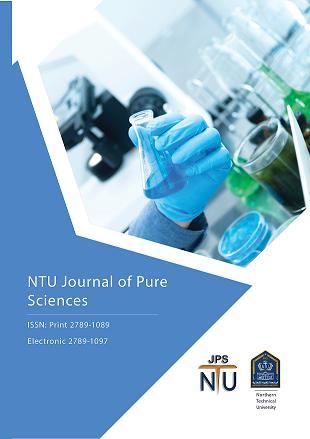A Comparison between Microscopic and Conventional PCR in the diagnosis ofGiardia lamblia among Children in Kirkuk
DOI:
https://doi.org/10.56286/r561be89Keywords:
Giardia lamblia, Microscopic, Conventional PCRAbstract
Abstract
This study is carried out in Kirkuk city which included collection of stool samples from children patients at a period extended from November /2021 - June/2022. A totaly 450 stool samples were taken from patients with ages 1-12 years old for the microscopic examination and PCR technique. Results showed a percentage of positive samples G.lamblia by microscopic examination was (4.88%) and negative samples was(91.9%).While,Conventional PCR recorded the percentage of (22.8).The highest infected patients found (5.45%) in males and lowest infected patients found (4.34%) in females. According to age group the highest infected patients was(5.8%) in age group (2-4 years) and lowest infected patients found (2.8%) in age group (10-12) years. According to month/years the highest infected patients in the june/may/February reorded (7.4%,5.3%,5%) respectivlly and lowest infected patients found (2.5% - 2.8) in December and jaunaury. The highest infected patients found (5.6%) in Rural area and lowest infected patients found (4%) in Urban area. For Molecular G. lamblia was detected by PCR using 18S rRNA sequence specific primers. The highest infected patients found (25%) in males and lowest infected patients found (20%) in females. According to age group the highest infected patients was(42.9%) in age group (2-4 years) and lowest infected patients found (0%) in age group (6-12) years.The highest infected patients found (28.6%) in Rural area and lowest infected patients found (12.5%) in Urban area
Downloads
Downloads
Published
Issue
Section
License
Copyright (c) 2025 NTU Journal of Pure Sciences

This work is licensed under a Creative Commons Attribution 4.0 International License.
The journal applies the license of CC BY (a Creative Commons Attribution 4.0 International license). This license allows authors to keep ownership of the copyright of their papers. But this license permits any user to download, print out, extract, reuse, archive, and distribute the article, so long as appropriate credit is given to the authors and the source of the work. The license ensures that the article will be available as widely as possible and that the article can be included in any scientific archive. Creative Commons License This work is licensed under a Creative Commons Attribution 4.0 International License.





